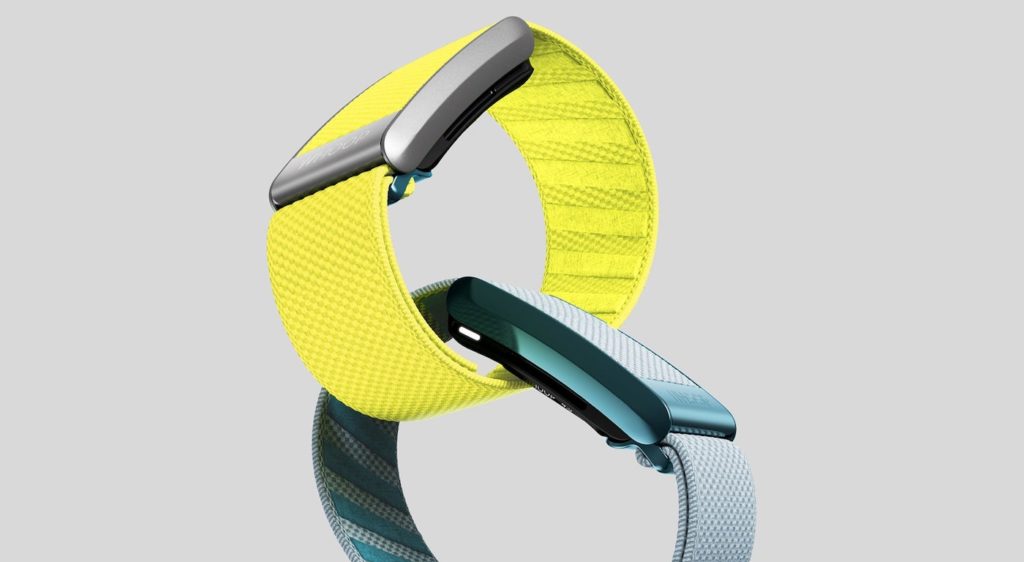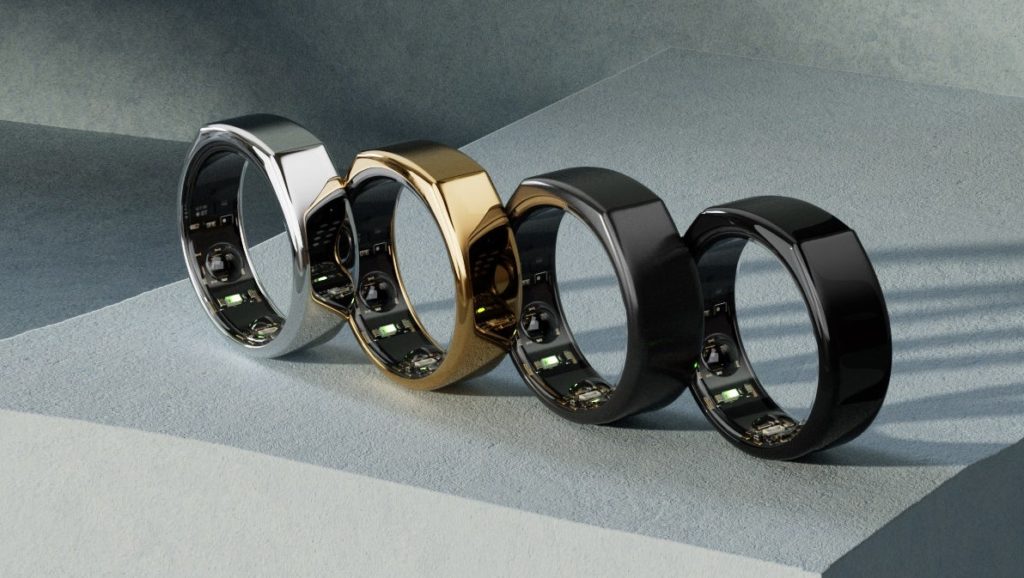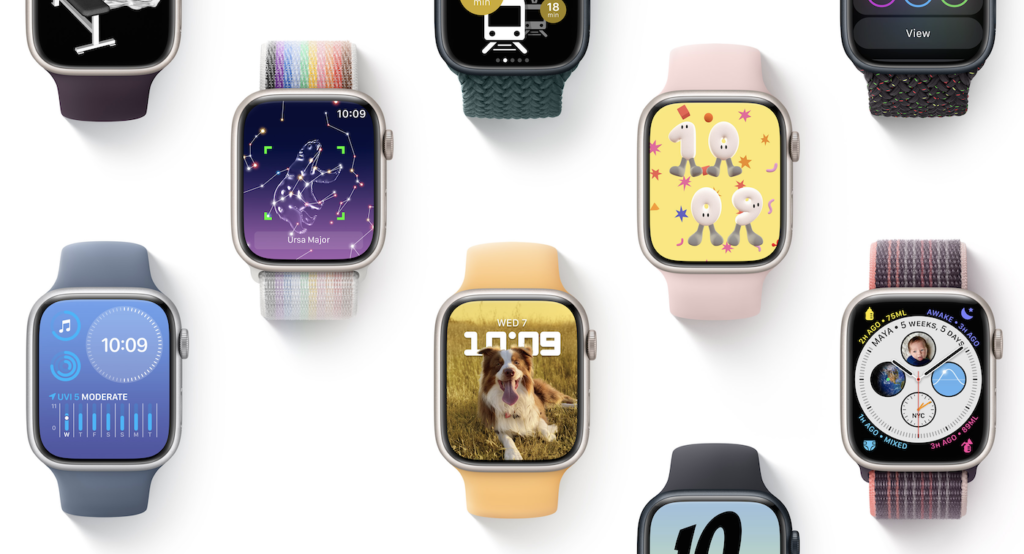[Updated: Dec, 2024]
Looking for a WHOOP alternative? it’s about time. After years of sales, nearly half a billion dollars of capital investments, massive endorsements paid to athletes like Cristiano Ronaldo, users are starting to see the diminishing value of the products. WHOOP users are looking for an alternative while their CEO looks for other business avenues. It seems $26/month just isn’t enough from its millions of users. Luckily, there are tons of better alternatives to WHOOP out there.
Is WHOOP worth it for the average person?
No. What are you looking to do really? Heart rate tracking? HRV? Monitor workouts? There are better devices out there. This is simply a “hype device.” Celebrities wear it and people buy it. It’s that simple. If you don’t mind paying a monthly till your final days, then go for it.

BIRTH OF NEW GENERATION WEARABLES
Given the lack of innovation from Fitbit and Apple, amazing products began to enter the market and take the lead. Companies like WHOOP, KOMODO Technologies, and Oura are now leading the way in terms of real health analysis. While Apple and Fitbit are focused on making a smart watch that is an extension of your smartphone, WHOOP focuses on making their 4.0 strap and extension of your heart, brain and body.
IMPORTANCE OF HEART RATE VARIABILITY
While Apple works with the same biomarkers it has for years, other companies have found new ways to monitor health more accurately. Some use sweat sensors, EDA sensors and WHOOP utilizes heart rate variability (HRV). HRV has become the stand-alone, most important biomarker that you could track. It’s a way of learning about your own bodies brain-to-body connection. It’s the most complex phenomenon in our body and HRV gives insight into it.
THE WHOOP BRACELET

WHOOP keeps it very simple. No screen, minimal sensors but a compact design with a nice-looking app. The main feature of the wearable is heart rate variability and they do a whole lot with it. And it’s thanks to WHOOP that we’re seeing a rise in fitness trackers without screens.
One of the features WHOOP was built on was recovery. Using HRV, the WHOOP Strap 4.0 shows you recovery status from a previous workout or activity. A high number will mean your are close to fully recovered and can go about your training as per usual. A lower HRV means your body is still experience stress internally and it might be wise to sit this one out or at least do a light workout.
Other features include sleep quality, SPO2, respiratory rate and even skin temperature with the new WHOOP 4.0
Is WHOOP worth it without the membership?
Is a car worth it without wheels and tires? It comes with a membership and if you stop paying, you lose access to the app.
Are there better alternatives to WHOOP?
Of course there are. Products like the Oura Ring and the AIO Smart Sleeve have much more to offer at a better price. The one main drawback of WHOOP is that it’s yet another thing we have to pay a monthly fee for. And if you’re not sick of that already, then WHOOP might be your best bet.
DOWNSIDE OF WHOOP 4.0
When deciding between the best WHOOP alternative, we’ll have to look at some of the down side of the wearable.
PRICE
In the early days of WHOOP, the price wasn’t a huge issue, but today, it’s completely unreasonable for many. It costs $40/month for the subscription, or you can sign a 12–24 month contract for a reduced rate. This was done because the company was getting loads of investor money a few years back. Investors usually always look for recurring revenue, and this “fitness subscription” is a way to do that. It was done as a money grab for investors as opposed to doing what’s right for the customers. Who doesn’t need another thing to pay monthly for, right?
WHOOP WITHOUT MEMBERSHIP
The question is, can you use a WHOOP strap without a membership? Obviously NOT! how else do you think they will make their money? unfortunately, organizations in every industry you can think of are going towards the Netflix model. Monthly subscriptions to improve cash flow. On one end, putting a service behind a paywall attract true enthusiasts who will use the product. On the other end, you close off a large majority of the consumer market who might have given it a try otherwise. In any event, WHOOP, and others, know exactly what they are doing with these membership rates.
WHOOP ACCURACY ISSUES
While almost all wearable products use an optical PPG (BPM) sensor, its accuracy has always been contested. If it’s used for its intended purpose, which is heart rate monitoring, that’s fine. But when it comes to HRV, there are many scientists that believe it’s a problem.
HRV needs to be extracted from something. There is no HRV sensor so the data will either come from a PPG sensor or an EKG. Most HRV scholars consider EKG to be the gold standard and a much superior tool to extract HRV than a PPG sensor.
LACK OF VERSATILITY
As stated earlier, the product is geared towards athletes. Aside from HRV, there aren’t many other good features. Features that many people like. It’s quite limited but if you’re serious about fitness and living an active lifestyle, this might not bother you. Obviously, there is no screen, which means no notification messages.
BEST WHOOP ALTERNATIVE 2025
Given the drawbacks, here are some products that could be the best WHOOP alternative for you.
AIO SMART SLEEVE

Komodo Technologies is a company that has pioneered some of the great HRV innovations of the 21st century. They developed the AIO Smart Sleeve, which was the first EKG-based HRV monitor on the market. Why is that significant? Accuracy. EKG sensors have a sample rate that is at least 30 times higher than that of a PPG sensor used by WHOOP. This means you are getting a more accurate, reliable picture of the most important thing; your health.
The AIO Sleeve is a smart compression sleeve that connects to your smartphone via Bluetooth. The app have a variety of events ranging from mornings readiness, before/after food, before bed, etc. You are able to accurately monitor your HRV throughout the day, see where it’s high/low and make adjustments throughout the weeks and months.
Along with HRV, there is an Activity Mode that allows you to log workouts and activities. There you will see BPM, average heart rate, max heart rate, and SPO2. It’s a unique device with wide range of features that many will love. It comes at a reasonable price tag with no monthly fees. PHEW!
POLAR H10 CHEST STRAP

Polar makes high end smart watches for all types of events from everyday life to intense training. They are also pioneers in the HRV space and the Polar H10 strap is a fan favorite. You’ve seen athletes on TV sporting these chest straps. You’ve also probably seen the Polar app open at your local gym where gym goers can compete for high scores.
The strap itself has a PPG sensor and an accelerometer. The Polar H10 boasts about a new an improved battery life of up to 400 hours. If true, that is a great feat. The best part about it, is that it’s simple and you just plug and play.
For the price, you are getting a great wearable that’s proven over many years. The only issue is that the chest strap might not be the most woman friendly device. Maybe try the AIO Sleeve instead. If ches straps don’t bother you, this is without a doubt the best WHOOP alternative.
OURA RING

For the price, you are getting a great wearable that’s proven over many years. The only issue is that the chest strap might not be the most woman friendly device. Maybe try the AIO Sleeve instead. If ches straps don’t bother you, this is without a doubt the best WHOOP alternative.
CARDIOMOOD

A bit less spoken about, but still a power player. Cardiomood is a Phillips-backed wearable tech device that is eerily similar to WHOOP. But again, without the monthly fees. Not to mention, this bracelet is loaded with features. From a PPG sensor, sweat sensor to HRV and SPO2. There is no shortage of features on this bad boy.
SUUNTO BELT
I’ve seen the twists and turns Oura has made in terms of product positioning over the years. And it’s fair. We’re talking about a very competitive market that features some of the biggest bank accounts on the planet.
As of recent, Oura is all about sleep. There are obviously other features such as heart rate and HRV. But recent positioning appears to be focusing on improving your sleep. Whereas WHOOP is all about performance and workout optimization. While still a hearty price tag, at least you’re not paying monthly for the Oura ring.
Is Apple Watch comparable to WHOOP?
Not even close. These are two products that are worn on the wrist and that’s about the only similarity they have. The Apple Watch is a notification center for your phone. While they have attempted to add more medial-grade features, the implementation has failed.
WHOOP on the other hand focuses on the athlete. Monitoring heart rate variability, sleep, tiredness and readiness level. It doesn’t even have a bloody screen. Two totally different devices.

APPLE WATCH VS WHOOP
When comparing the two, the really is no comparison. It really depends on the individual purchasing the product and what his or her needs are. The Apple watch has become more of a status symbol than anything else. It’s a way to take your iPhone and put it on your wrist. But if you are looking for deep health insights, WHOOP is the way to go.
Whereas WHOOP has 1 maybe 2 sensors in the device, Apple has a whole bunch of them. This includes a 3-axis accelerometer (this is how you establish steps), a gyroscope, and EKG sensor and of course a PPG sensor. So, in the end, you are looking at several sensors with minimal importance (aside from EKG) vs one sensor that is significant. And it’s also what WHOOP is able to do with HRV data that’s impressive.
Is Apple Watch comparable to WHOOP?
If you’re looking for a smartwatch with SMS and app notifications then obviously the Apple Watch is the way to go. It obviously has a higher up front cost but doesn’t come with annoying monthly fees. So in the end, you win with an Apple Watch. Now, if you’re looking for advanced analytics and don’t mind monthly fees, then WHOOP is your best bet. If you know enough about heart rate variability, then you know how powerful products like WHOOP are.
And when a company’s sole focus is HRV, you know they’ll do a great job at that one thing. And while Apple Watch DOES have an HRV feature, it’s not as extensive. We’ve tested the Apple Watch a lot. The best thing we can say is that if your don’t pay much attention to a feature, you might as well not have it on the device at all.
OURA RING VS WHOOP STRAP 4.0
If Apple is at the top of the wearable pyramid, these two products are the next row down. Some would consider Oura as the best WHOOP alternative since it’s main feature is also HRV. The main difference is that Oura is a ring, not a bracelet. And given the literature, Oura’s main focus is sleep. Sleep has become the most popular topic in terms of wearable technology and the company is capitalizing.
While WHOOP is built for serious (and amateur) athletes, Oura is tailored to the everyday man or woman who are looking to track and hopefully reduce stress levels. At the end of the day, it’s going to come down to price and comfort. Do you want to pay monthly for the rest of your life for WHOOP, or do you want to shell out a $400, on-time payment for Oura? Do you like wearing rings or bracelets?
Is Oura or WHOOP more accurate?
Both devices use similar technology (a PPG sensor). Both companies claim (even though PPG sensors have been forever refuted as accurate) that they have much more accurate sensors than the market knows about. That’s a lie. There is no independent 3rd party evidence to prove they have a “better PPG sensor.”
FITBIT VS WHOOP
The Fitbit cult is strong. But again, when deciding between the two, ask yourself “what do I want from a wearable”? We have often been somewhat harsh on Fitbit and their lack of innovation. But that’s only because we know they can make the most incredible wearable product if they so chose. Fitbit does have an HRV feature, but there has been contention and confusion surrounding its effectiveness and how it really works.
Instead of HRV, Fitbit decided to use different technology in some of their new products. They have added an EDA sensor to several models in the past couple of years. It’s their version of stress monitoring, which is much inferior to the HRV method. Essentially it measure sweat levels on an individual. The more sweat, the higher the stress level. While HRV is actually tracking your heart, autonomic nervous system and parasympathetic response. The two are not the same. But if you need a somewhat decent health monitor with a screen and phone connectivity, then the Fitbit is a great option.
Is Fitbit as good as WHOOP?
Basically there is nothing Fitbit does better than WHOOP, either than having a screen and costing less. In terms of technology and functionality, the two are not even in the same ball park. WHOOP can be compared to KOMODO’s AIO Sleeve or Bioheart, but never FItbit.
What is the best app to replace WHOOP?
Depends what you’re looking for. The best options are probably the AIO Sleeve and the Apple Watch in terms of functioning apps. The WHOOP app is quite limited. And unless you are a total HRV enthusiast, you likely won’t understand it. And that comes from use listening to WHOOP users describing their knowledge of the product.
What is the WHOOP controversy?
WHOOP made an insane statement that their fitness device may predict premature births. With no evidence or support. This is why people love them. They are bold!
Which do you think is the best WHOOP Alternative?


Same! Terrible service from WHOOP – totally over hyped – very, very, very disappointed. Don’t bother.
WHOOP is trash bro. Just another garbage item being pushed by Joe Rogan and his butt buddies
Although Whoop promises that a replacement will be sent “immediately” if the device is faulty, this is not true at all: I have been waiting for the replacement for over three weeks now and nobody answers – and there is no telephone number either. Hands off Whoop. Not recommended.